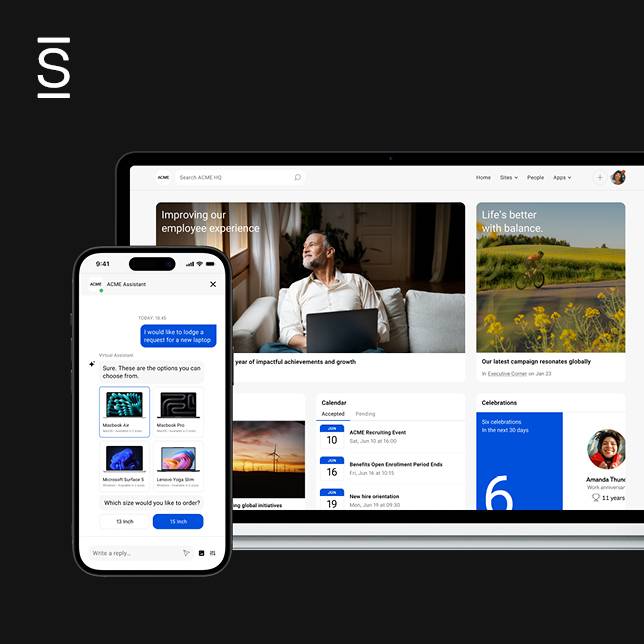What is a Chief Human Resources Officer?
When looking at the titles of executives in major corporations, it is common to see an individual with the title of Chief Human Resources Officer. A look at multiple organizational charts shows this general trend. This is hardly surprising, as the Chief Human Resources Officer (CHRO) of a company holds a strategic role within the upper echelons of a company’s leadership.
But this raises a few questions worth asking. For starters, what is a CHRO exactly, and what does CHRO stand for? Simply put, the CHRO is responsible for overseeing all aspects of human resource (HR) management, policies, and practices within an organization. They are the architects of workforce strategies that align with the company’s goals.
Responsibilities of the Chief Human Resources Officer
A CHRO’s job description extends far beyond hiring and firing. They are involved in strategic planning, employee engagement, talent development, and much more. Their ultimate goal? To sculpt a workforce that drives the organization’s success forward.
Some key responsibilities that CHROs must focus on include:
- Talent & training: a good CHRO must develop a strategy that covers recruiting, hiring, training, and retaining employees. This involves a number of HR disciplines including talent acquisition & management, employee training, and succession planning. CHROs should have a solid understanding of what differentiates good employees from great ones, and they should also be able to create an environment that allows prospective leaders to thrive.
- Salary & compensation: CHROs play a critical role in determining employee compensation and ensuring that the organization stays competitive when it comes to rates, salary, and bonuses.
- Staff & Assets: CHROs oversee a wide range of people who help managers hire and manage members of an organization. They also manage compensation and benefits programs (which can include insurance plans, healthcare, and retirement plans).
- Company Culture: CHROs play a vital role in fostering a vibrant company culture that benefits all employees. Some tools that CHROs use as part of this work is to create and oversee engagement & wellness programs, perks, and recognition programs. These programs are focused on improving employee experience, productivity, and retention. In addition, CHROs play an important role in employee relations, including grievances, collective bargaining, and discipline.
The Nature of the CHRO Role
The CHRO role has evolved significantly over the years, transitioning from administrative duties to a more strategic focus. This evolution underscores the increasing recognition of the value human capital brings to an organization’s success.
Modern CHROs are integral to their organizations, and their overall role is much more far-reaching than it once was. This has generally coincided with an evolution in how organizations view HR. Whereas HR was once seen as a mostly administrative area that involved largely clerical work, CHROs today are critical due to their ability to influence the work environment and their role in handling employee complaints, benefits, training, and retention.
Distinguishing Between HR Manager and CHRO
While both roles fall under the HR umbrella, there are distinct differences between an HR manager and a Chief Human Resources Officer. Understanding these differences is key to recognizing the strategic importance of the CHRO within an organization.
Scope of Responsibility
An HR manager typically oversees day-to-day HR functions and reports to the CHRO, who is responsible for aligning HR strategies with the company’s overall objectives.
Strategic vs. Operational Focus
HR managers often focus on operational aspects of HR, such as recruitment and employee relations, while CHROs are involved in higher-level strategic planning.
Essential Skills for a Chief Human Resources Officer
Becoming a CHRO requires a unique set of skills, ranging from strategic vision to exceptional interpersonal abilities. Let’s delve into what it takes to succeed in this pivotal role.
Strategic Thinking and Problem-Solving
A top-tier CHRO must possess the ability to think strategically about the organization’s future and solve complex problems that span across the entire organization. A CHRO understands the company’s goals and is capable of identifying which key positions are vacant, when and how to recruit for these roles, and foresee hiring needs ahead of time. This also means that they need to be up-to date on emerging technologies and be able to pinpoint weaknesses in their recruitment process, employee retention and employee engagement.
Exceptional Communication and Interpersonal Skills
Effective communication and the ability to build strong relationships are indispensable for a CHRO, given the need to interact with various stakeholders, from employees, board members and other executives. Moreover, a CHRO serves as a consultant to the CEO and management on all matters regarding human resources.
As an HR leader, it is equally important to listen and act on what your employees are telling you. Gather insights through sentiment checks, employee surveys, as well as real-time, data-driven insights through AI, unveiling hidden employee sentiments that traditional surveys often overlook. When employees see their concerns and suggestions being addressed, they feel valued and more engaged at work, leading to better performance.
Conclusion
In summary, the role of a Chief Human Resources Officer is vital in navigating the complexities of today’s business environment. By understanding what a chief human resources officer is and what they do, aspiring HR professionals can better appreciate the strategic importance of this role. Moreover, recognizing the difference between an HR manager and a CHRO, as well as the essential skills needed, provides valuable insights for those aiming to climb the HR career ladder.
Ready to dive deeper into the world of HR leadership? Discover why HR Leaders choose Simpplr to engage employees and learn why a modern intranet is your secret weapon to employee retention.

Watch a 5-minute demo
See how the Simpplr employee experience platform connects, engages and empowers your workforce.
- #1 Leader in the Gartner Magic Quadrant™
- 90%+ Employee adoption rate









